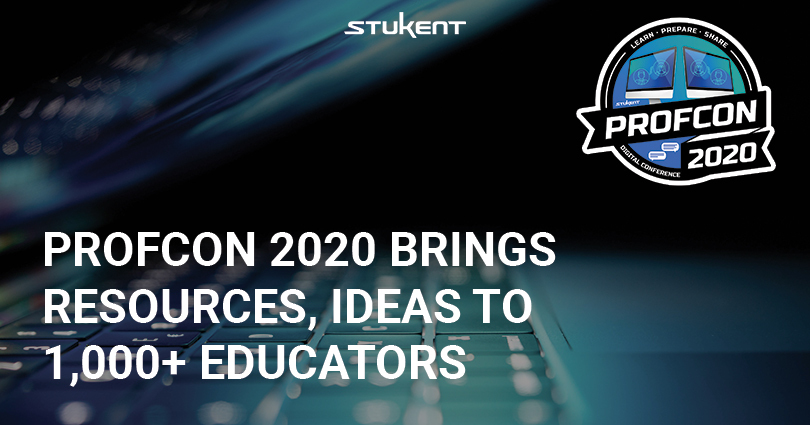Assignments and resources, industry perspective, networking opportunities, prizes, and a commitment to education in the country of Benin were all part of ProfCon 2020.
The conference for marketing educators — presented online due to COVID-19 concerns — was held June 15-17. These days of instruction and connections formed the second installment of ProfCon, a conference offering from Stukent. Access to recordings of all ProfCon 2020 sessions is available for $47.
Following is a recap of this year’s event, including some of the resources and perspectives shared during the conference.
DAY 1: Monday, June 1
WELCOME AND KICKOFF

Better Together
Stuart Draper, CEO of Stukent, Inc.
In the opening presentation, Stu spoke of educators and Stukent working together to improve education. He highlighted inroads that Stukent has made into the world of education and shared survey results about what students find academically helpful.
The presentation also gave a heads up regarding new products Stukent has in sight for the future, including eight simulations and four digital textbooks.
Stu also announced plans for Stukent to fund the construction of a new building for the van Duyse Entrepreneurial Leadership Institute (VELI), a school in Benin, Africa. VELI, headed by Gregory van Duyse, provides students training in English and entrepreneurship.
Last year, Stu, along with Stukent senior course consultant Connor McCook and Stu’s parents, Debbie and Larry Draper, visited the VELI facility. Later, Stukent made a $20,000 donation to the school. VELI students also receive free access to Stukent courseware. Stu invited ProfCon 2020 attendees interested in supporting the work of VELI to contact him.
See the video below for more on Stukent’s trip to Benin.
KEYNOTE ADDRESS

How to Maximize Teaching with Digital Marketing Tools
Scott Cowley, Western Michigan University
Scott shared digital marketing tools to be taught to students. The tools were arranged into three categories: strategy, website, and “specialty.” Below is an overview of the strategy tools presented:
STRATEGY TOOLS
“3 Questions” Analysis
This tool is for analyzing a variety of material, and “that includes websites, that includes ads, email, anything where you are trying to achieve something by creating some type of marketing communication,” Scott said.
The “3 Questions” Analysis tool calls for analysis based on these queries: “What are you offering?” “Why should I pick you?” “What do you want me to do next?” The idea is that a piece of marketing content should provide the audience with an answer for each.
“Hero Hub Help” Strategy
Scott said that this approach is for building content strategy that is about more than advertising to an audience. This strategy involves building value for an audience.
He explained that the “Hero” component is “based around your biggest messaging … we are talking about something you may only use a couple of times a year,” such as for product launches.
In talking of “Hub” content, Scott described “a formulaic approach to some type of content where you have a winning formula and you are going to repeat that formula …” This is about hooking an audience with content.
“‘Help’ content,” he said, “is the content that you’re creating specifically because of things that people in your target market are searching for.” The next step is to “create content specifically to fill that need.”
KEYNOTE ADDRESS
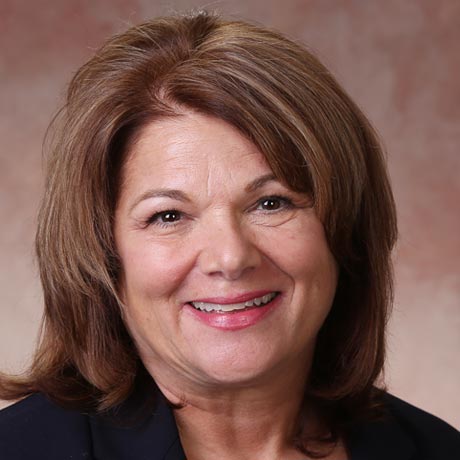
Consumer Behavior and Digital Marketing in a Post-COVID World
Elaine Notarantonio and Michelle Charello, Bryant University
Elaine opened with speaking of the shifts instructors, students, and consumers have made due to the COVID-19 pandemic. Michelle shared ideas about how business models and operations changed.
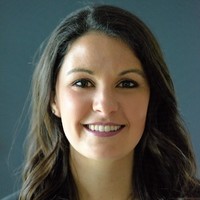
Then, Elaine brought the discussion to what a transitional slide in the presentation framed as “The big unknown.”
“So now what?” she posed. “As states and countries reopen, how will consumers and businesses react? Will consumers return to their pre-pandemic habits? Will they continue along this new trajectory that they’ve become used to? Or will they adopt completely new behaviors?”
“One thing we do know,” Elaine said is that how businesses respond to the pandemic “will impact how we teach and also what we teach in our courses in many ways.”
In line with that idea of educational change, the presenters shared assignment ideas that could be incorporated. The suggestions were primarily for consumer behavior, digital marketing, and social media marketing courses.
Ideas included an activity in which student groups create a post-COVID strategy for a business.
Another idea was a mini case for responding to decreased visits to an upscale gym following a COVID-19-related period of members conducting workouts from home. Attention was given to incorporation of the tri-component model of attitude — a model focused on consumer feeling, behavior, and beliefs — for the business in this scenario.
BREAKOUT SESSION

Creating an Advertising Media Curriculum in a Rapidly Changing World
Beth Egan, Syracuse University
Beth shared that ability with Excel, Google Ads, Google Analytics, and social media (emphasis on Facebook), as well as understanding of programmatic advertising and ecommerce are paramount in making advertiser-to-consumer connections.
TOOLS OF THE TRADE
During the presentation, Beth also suggested resources to help student learning in the given areas of advertising:
Excel: “Certification Prep: Excel Associate – Microsoft Office Specialists for Office 2019 and Office 365” through LinkedIn Learning
Google Ads: Google Skillshop
Google Analytics: Certifications from Google Skillshop
Social Media: Facebook Blueprint
Programmatic advertising: Certifications from The Trade Desk Edge Academy
E-commerce: Amazon Learning Console
BREAKOUT SESSION

Building a Personal Brand (Empire) through Social Media
Karen Freberg, University of Louisville
During the session, Karen expressed that for an educator, building a personal brand extends beyond “traditional” ways educators present their work. A slide on this topic called for educators to “[t]hink like a media company” to promote their own personal brands.
Karen also spoke of educators being authentic when creating a personal brand. “You want to be true,” she said.
BREAKOUT SESSION

You’ve Created Followers, Now Develop Leaders
Leo Morejon, Iowa State University & West Virginia University
Leo called on educators to teach students how to sell, both internally and externally. He said that “selling is about motivating and educating folks.” He also advocated that work culture should be a topic of instruction. “It means teaching how to work with others, how to present oneself … and how to build others.”
This session included ways for educators to help build students into business leaders. One was to read social media news that could be incorporated into class. He also suggested the following sources to gather such news:
BREAKOUT SESSION

How I Survived Converting My In-person Course to Online
Mary Owusu, Canisius College
Mary shared with audience members four main suggestions for teaching online:
1. Commit to a mastery mindset
“… [T]he mindset you’ve got to have — one, my online course is not the same as my in-person course, and two, I want my students to be able to actually apply what they’re learning, to actually do something with it,” she said.
2. Simplify the tech
3. Engage with purposeful interactivity
4. Be actively present
TOOLS OF THE TRADE
Mary said she uses online polls and individual email check-ins during the semester. She also recommends office hours and using Loom. She also suggested Google Meet, Zoom, and YouTube Live.
BREAKOUT SESSION

These 5 Frameworks Are the Foundation of Teaching Digital Marketing Analytics
Nathan David, Cleveland State University
Nathan presented five frameworks he suggests for teaching digital marketing analytics.
1. Digital Marketing Analytics Framework
Nathan called this the “overarching framework that encompasses all the other frameworks” and the answer to the question, ‘What is digital marketing analytics?’” It is a framework to help students see their role as an analyst in the context of digital marketing analytics.
2. McKinsey Consumer Decision Journey
The framework is from the firm McKinsey and Company.
3. Measurement Model Framework
This framework “basically takes all of those buzzwords that people use in marketing and digital marketing and puts [them] into a hierarchy so that a student can understand … what’s important to a business” and how to support business goals.
4. Decision-making Framework
The Decision-making Framework presents four steps an analyst is to take: 1) Question, 2) Curate, 3) Analyze, 4) Optimize.
5. Owned, Paid, and Earned Media Framework
Nathan said that analytics instruction based on media type is helpful for students.
BREAKOUT SESSION

How to Teach Marketing Analytics Using a Simulation
Brennan Davis, California State Polytechnic University
Brennan’s presentation focused on Mimic Analytics, an analytics simulation that he developed with Stukent. He explained that the simulation is available paired with Marketing Analytics and with Business Analytics, two digital textbooks he has authored.
The session included an overview of the simulation’s nine rounds, which together incorporate data transformation and integration, as well as cluster analysis. A/B testing is the focus of the last four rounds.
Brennan also shared industry testimonials about courseware he has created with Stukent and what he sees as positives about the Mimic Analytics simulation for both instructors and students.
BREAKOUT SESSION

Tales from the Other Side: What Marketing Agencies Wish Professors Knew (and Vice Versa)
Ryan Russell, University of Tennessee at Chattanooga
Ryan shared conclusions he has reached regarding distance between industry and education and suggestions for “how to make our students real-world ready.”
One suggestion for improving education — an idea he credits to Perry Drake of the University of Missouri-St. Louis — is “an advisory board that is made up of industry professionals that can feed into us as professors in order [for professors] to know what to teach our students.” Ryan’s slide deck also suggested that instructors “[l]everage your class time and on-campus facilities” and to “[r]ekindle your love of marketing.”
BREAKOUT SESSION

Mobile Marketing: Post-pandemic Applications
Mary Beth McCabe, National University
Mobile marketing case studies were a major component of Mary Beth’s presentation. She talked of their educational value and shared case study examples.
The Lockdown Whopper campaign, which started in June in Brazil, and the #StayHome Miles Exchange campaign for Thai Airways by Wunderman Thompson were both discussed. She also gave attention to mobile marketing by Starbucks and Domino’s.
BREAKOUT SESSION

Beyond the Book: Designing Assignments That Bridge the Academic-Industry Divide
Jennie Donohue, University of Massachusetts Amherst
Jennie’s presentation included “three examples of digital communication activities that meet both curricular needs as well as industry needs.”
The first example: an activity that includes the reading, analyzing, and creating of content about an industry book. The second activity is a live Twitter chat in class. The third activity calls on students to engage with industry news and interact with classmates.
DAY 2: Tuesday, June 16
INDUSTRY PRESENTATION

An Introduction to Acadium Apprenticeships
Graham Sterling-Moffet
Acadium facilitates the formation of three-month, online apprenticeships in digital marketing.
The company identifies three main problems those looking to enter digital marketing jobs face — a lack of a network, experience, and time — and provides a structure for overcoming each.
Graham explained, “The model is a marketplace. We connect apprentices, or students, with business owners, or mentors, and these mentors are often digital marketing professionals — and the two work together … so that they can help each other both succeed on their goals.”
KEYNOTE ADDRESS

Facebook’s Higher Education Portal
Nicole Goldstein, Facebook
In her presentation, Nicole provided context and plans regarding the Facebook Blueprint Educators Portal, a collection of resources for marketing education from the tech company.
She said, “… we recognized that there was a need for … content and learning experiences in the higher education space. And so over the past year and a half we have been partnering with educators and also job seekers and students to understand what their needs are and what certifications will best suit them.”
Nicole talked about four areas of the Educators Portal:
1. Content for educators
2. Content for students
3. Digital marketing certifications
4. Employer connections
The educator and student content is free. The entry-level certification costs $99, but there is a voucher program available.

BREAKOUT SESSION
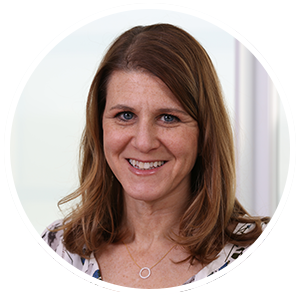
Lessons Learned: Launching a New Digital Marketing Degree
Stacy Smollin Schwartz, Rutgers University
Stacy talked about the master’s degree in digital marketing that she developed for Rutgers Business School. She described the degree as “fully online,” and “a specialty masters degree that’s basically a faster, more specialized, and less expensive alternative to getting an MBA.”
Her presentation included a degree curriculum diagram, which she referenced in saying, “Really clearly what I’ve done is created these modern versions of very foundational marketing courses.”
She also explained, “we start off with an introductory course and we end with a capstone strategy course that ties everything together.”
BREAKOUT SESSION
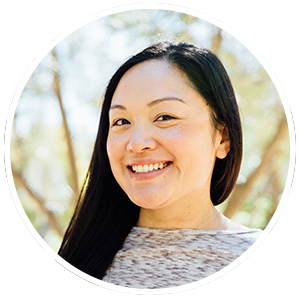
Invest in You Like You Invest in Your Students
Lydia Chen Shah, CalPoly Pomona
“As we seek … to change our students’ paths, how about our own?” Lydia posed during her session. That question was part of a presentation that included three main categories, the first on defining social value, the second on social capital, and the third on social impact.
“When you are creating that social capital and you’re making all the tremendous impact that you are, it’s important to manage expectations for yourself and for the others involved in your networks, or, in your links,” she said.
BREAKOUT SESSION

Don’t Forget Email! Teaching Email Marketing and Making It Fun
Rich Hanna, Babson College
Rich presented five approaches for teaching email marketing.
1. Historical Trivia
He shared questions he poses to students about the history of email.
2. Email Accounting
One way to engage students is having them evaluate their own emails.
3. Look at Promotions
This approach involves instruction involving “[b]last emails versus targeted emails and drip campaigns,” Rich said.
4. Build a Workflow
He said that “what this [suggested workflow assignment] allows you to do is think about the buyer’s journey and buying behavior and tie it into the messaging you want to use to communicate and connect with your customers.”
5. Experiments and A/B Tests
“Show how to do an A/B test using an email,” he said.
BREAKOUT SESSION

Incorporating Public Relations Assignments into Non-public Relations Specific Courses
Alisa Agozzino, Ohio Northern University and Jamie Ward, Eastern Michigan University
Alisa, known as “Aggie,” and Jamie shared public relations assignments.

Aggie spoke of a brochure assignment that incorporates both writing and design. She also talked of a podcast assignment that can be completed without “all the bells and whistles” of higher-end recording equipment.
Jamie presented information on her Digitally Mediated Relationship Assignment that, according to her slide deck, calls on students to “[use] social media alone, [to] build a relationship with a public relations professional over the course of the semester.” The second assignment she shared is her Diverse Voices Assignment in which students rebuild campaign messaging.
She also talked of how she uses Stukent’s Mimic Social simulation in her introduction to social media course.
BREAKOUT SESSION

Creating Engaging Videos for Online Instruction (On a Budget)
Kinda Wilson, Oklahoma State University
Kinda’s session included multiple takeaways, including a number of resource ideas and perspective on equipment, for building successful instructional videos.
Here are four points from her slide presentation:
- Everything should show YOUR personality
- Bring your extravert side
- All videos should be landscape orientation (widescreen)
- SHORT clips
TOOLS OF THE TRADE
Kinda shared the following program options for video editing:
BREAKOUT SESSION

Online Learning: Predicting Student Success in Higher Education
Mary Beth McCabe, National University
Mary Beth shared application ideas related to her research on predicting online student success.
She suggested giving students early access to online class materials, particularly to students who have enrolled in their first online course.
She also gave suggestions based on research findings correlating the number of clicks and perceived learning. “There’s a theory here that those who are clicking a lot may be struggling,” she said. “… [Y]es, students who are doing well are clicking a lot, but there [are] also students who are not doing well who are clicking, who are struggling …”
Mary Beth said, “… [i]f we can start paying attention to course clicks, we may be able to reward those high achievers … give them some extra opportunities …” She continued, “And then for struggling students, there could be a way that you could give them remedial help or that you could just become a better listener for when they are struggling …”
Among the suggestions on her slide deck were “[a]dvocating the research community with teamwork across many parts of the university and “[a]dvancing the online teaching community as a profession.”
KEYNOTE ADDRESS

10 Things We Should Be Teaching Marketing Majors, but Aren’t
Jerry Rackley, Oklahoma State University
Counting down from 10, Jerry shared what he says marketing majors need to learn.
He said “that the order [of the list] isn’t really that important until we get to number one.” Jerry also said that he was “not trying to criticize any of our efforts in the classroom” with the list, explaining further that “[t]his is just kind of my desire to try to do more — and that’s really what this list and presentation represents.”
See Jerry’s list below:
10. Technology
9. Design
8. Time and Project Management
7. Communication
6. Know the Business
5. Accountability
4. Politics
3. Leadership
2. Culture
1. Money Isn’t Everything
BREAKOUT SESSION

Incorporating Mock Market Research Projects in an Online Environment
Steven Stromp, Davenport University
Steven shared his perspective on transitioning a face-to-face market research course to an online offering and gave ideas on successful market research instruction in an online environment.
His presentation included why a mock project may work more effectively than a client project.
The slide deck presented during the session included these pluses of mock projects:
- Assurance project will map to course outcomes
- Robust scope and depth of study
- Standardization=more manageable in online and/or accelerated formats
- Parts of projects can be predictably “chunked out” by defined week
He also shared concerns that accompany a mock-project approach.
BREAKOUT SESSION

Design Thinking, Digital Marketing, and You!
Emily Quinn, University of South Dakota
“Teach the next generation of marketers how to get creative before launching an idea and you will provide a necessary and stand-out skillset.” That wording comes from the preview of Emily’s ProfCon presentation. In the session, she shared assignment ideas for bringing design thinking together with digital marketing instruction.
She helped frame design thinking with a quotation from David Kelley, the founder of design company IDEO: “The main tenet of design thinking is empathy for the people you’re trying to design for. Leadership is exactly the same thing — building empathy for the people that you’re entrusted to help.”
She offered an empathy mapping assignment and a persona assignment that involves analytics. She also gave attention to drawtoast.com while speaking of a “How to Make Toast” exercise that stems from TED speaker Tom Wujec.
BREAKOUT SESSION

Digital Marketing Strategy: An Applicable Framework
Jeff Larson, Brigham Young University
During his presentation, Jeff displayed a digital marketing strategy framework through a diagram depicting both potential and non-potential customers moving from an “Attention” stage to a “Loyal Customers” stage. “… [I]t’s so fundamental that what you’re trying to do in digital marketing is target as effectively as possible only potential customers,” Jeff shared.
The diagram showed how the three areas of “demand generation,” “demand harvesting,” and “loyalty building” correspond to customer movement and digital marketing channels.
He said, “…. [W]hen we allocate our resources, we are being specific,” and shared that allocations are to be made toward specific areas depending on priorities. “We are allocating resources not in general …,” he said, making his point with the hypothetical explanation that “[w]e’re investing this much in SEO for demand generation and then we’re going to invest this much money in SEO for demand harvesting.”
BREAKOUT SESSION

Influencer Marketing: Q&A with Amanda Russell
Amanda Russell, University of Texas at Austin
This session was set up as a Q and A exchange with Karen Freberg of the University of Louisville presenting the questions and Amanda giving answers. Karen also helped answer questions due to technology issues.
The initial question of the formal Q and A dealt with why influencer marketing is misunderstood. In her response, Amanda said, “… [I]n order to understand influencer marketing, first you need to understand how people are influenced and come back to the true definition of ‘influence.’” She continued, “… you need to first understand what will influence your desired audience.”
In the session, Amanda also talked about seeing influencer marketing success in relation to goals and intangibles rather than on numbers by themselves.
BREAKOUT SESSION

How Do We Know They Can Apply Anything? Assessing Digital Marketing Competency
Debra Zahay-Blatz, St. Edward’s University
“There has been a lot of progress made in teaching digital marketing,” Debra said during a presentation in which she called for assessments that can help determine student competency in digital marketing.
Debra shared a number of assessment types, including simulations, certifications, and examinations. She talked about an undergraduate approach in which students move from 1) a stage of certification completion to 2) application through a simulation and an in-class project, and 3) practice through client projects.
She likened completing a certification to receiving a driver’s license and indicated, too, that in the “rush” for students to complete certifications “basic strategic concepts can be kind of lost in the shuffle, as well as communication skills.”
She indicated that she is “working on a paper right now about what employers are looking for” in those hired for entry-level positions “and many of those skills are more critical thinking and communication skills, so we need to get that into the digital marketing classroom.”
DAY 3: Wednesday, June 17, 2020
KEYNOTE ADDRESS

EQ Strategies for the Classroom
Rafic Sinno, University of Dubuque
“As a professor, you work hard to deliver a great learning experience, contribute to your field, and develop relationships with colleagues,” according to Rafic’s presentation preview. “Yet, the responsibilities of being a professor can be emotionally demanding. In this session, you will learn how to use emotional intelligence (EQ) to address these demands and further your potential.”
During the session, Rafic acknowledged factors that affect educators and strategies that educators can employ. “There are challenges, there are setbacks, and there are opportunities, and you and your students face these opportunities,” he said.
“… [W]e have to be able to regulate ourselves and choose to be present in the moment and to be the best of ourselves in the moment,” Rafic said, “and that’s really speaking to the essence of emotional intelligence.”
The classroom EQ strategies he shared were framed by self-awareness, self-management, empathy and social awareness, and relationship management. These are the four ability areas Daniel Goleman presented in his best-selling book, “Emotional Intelligence.”
STRATEGIES
Self-awareness
A strategy for the self-awareness area is to check with students about how they feel about coursework, Rafic said. Additionally, he shared the following questions in his slide presentation:
- How do students feel about the digital marketing field?
- What recent developments concern them?
- How do they feel as consumers of social platforms?
- Do you create a safe place to discuss how they truly feel?
Self-management
A strategy relative to self-management is to “ask students to respond to negative consumer reviews.” His slide presentation also suggested that an instructor “[s]imulate a sales or client proposal rejection in class.” He posed, “How will students respond?”
Empathy and Social Awareness
For empathy, Rafic suggested having students pair to practice responding to customer service situations. Another suggestion in the slide presentation: “Ask students to identify emotional statements in product reviews. What terms/emojis are customers using to relate to how they feel about the products they purchased? Which reviews seem genuine?”
Relationship Management
Rafic talked of having students identify individual and classmate communication styles. He also suggested that instructors “provide an overview of the team formation model” by Bruce Tuckman, which incorporates group “forming, storming, norming, performing, and adjourning.”
IQ / EQ
Near the end of the presentation, Rafic shared the following from Daniel Goleman: “I would say that IQ is the strongest predictor of which field you can get into and hold a job in, … But once you are in that field, emotional intelligence emerges as a much stronger predictor of who will be most successful, because it is how we handle ourselves in our relationships that determines how well we do once we are in a given job.”
UPCOMING CONFERENCE
ProfCon 2021
ProfCon 2021, the next conference in Stukent’s ProfCon series, is scheduled for June 14-16, 2021, in Las Vegas.
Click here for more information and to purchase tickets.
